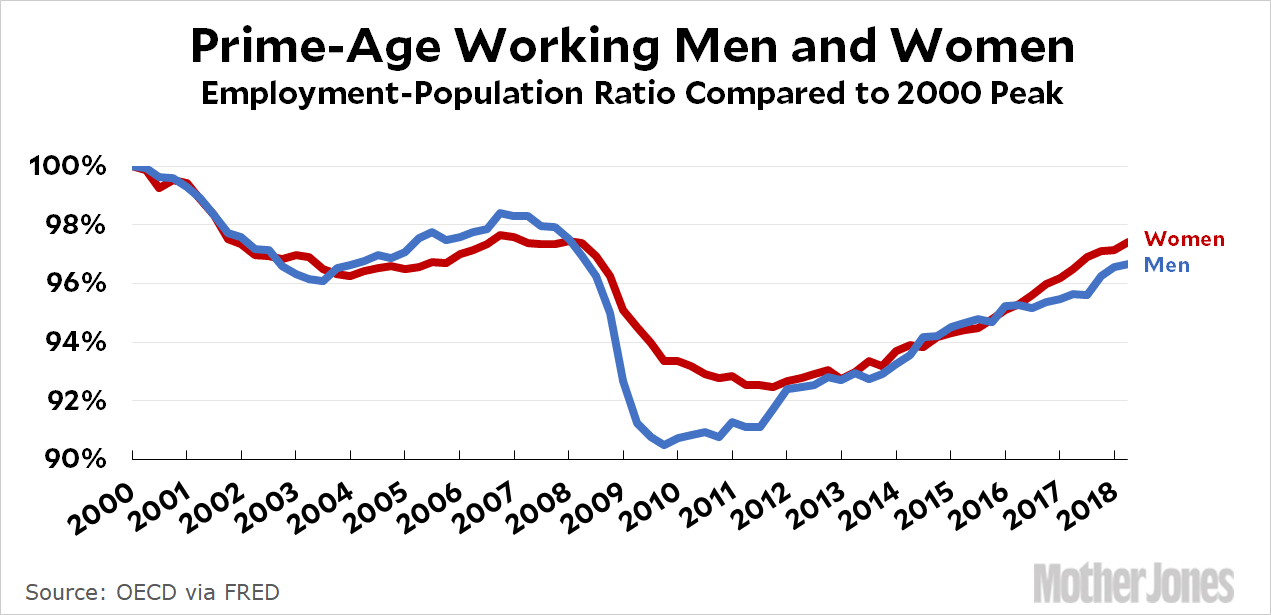This is apropos of nothing in particular. I’m just futzing around with economic figures to see if anything looks interesting. Here’s the employment rate for prime-age (25-54) men and women in the United States:

The employment-population reached its peak in early 2000. It dipped during the 2001 recession and plummeted during the 2009 recession, but has been steadily improving ever since 2012. It’s now at about 97 percent of its level at the peak of the dotcom boom.
There’s no dotcom boom on the horizon right now, so my guess is that the employment population ratio can go up another percentage point and that’s about it. That’s approximately another million jobs before it peaks again, which should take a year or so. By the first half of 2019, the economy probably will have topped out and will be ready to start declining again.
Unless, of course, Republicans decide to artificially boost the economy yet again in hopes of squeezing out just enough activity to keep them in office a little while longer. But if they do, they better be pretty sure of their timing. After all, the bigger the artificial boost, the harder the artificial fall.
















